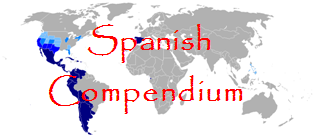I’m not a huge fan of “natural” language learning approaches for adults but they make perfect sense for children. Case in point, a Lincoln, NE based-program called The Language Project.
Many other nations teach children English from the moment they start school.
But in the United States, learning a second language typically doesn’t start until middle school or even high school, and only then do most teens take the courses because it is a requirement for graduation or a prerequisite for college admission.
Ironically, waiting that long makes it harder for students to learn the language.
“Research shows that a window of opportunity exists between the age of birth and age 7,” Greenwood said. “During this window, children pick up languages more easily, largely because their brains absorb and retain language differently than they will as middle school or high school students or as adults.”
Children of immigrants can relate. They grow up speaking their parents’ native language at home, however haltingly. What they do take in is intuitive. The more that their parents speak their native language at home as opposed to their adopted country’s tongue, the more that the kids will pick up through this naturally immersive environment.
Therefore, those who aren’t children of immigrants will benefit from immersion programs in order to pick up a second language. In this case, Spanish.
“Adults need structure and rules. That’s the way we think,” Greenwood said.
But it is not the way children think.
They learn through play and 100 percent immersion, Greenwood said.
In TLP [The Language Project] programs they hear only Spanish. They read storybooks, play games, sing songs and go on treasure hunts.
The Language Project looks like a pretty good approach for children and many other cities are starting to offer language immersion programs for children.
But it’s important to keep in mind that adults and children learn differently. Adults will learn best using programs that take a multidisciplinary approach to language acquisition. That’s best implemented by a program like Fluenz. Or by a multi-approach that combines an immersion program like Pimsleur and Spanish for Dummies. To look at different ways that adults can approach language acquisition, click here.

